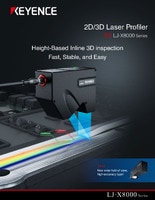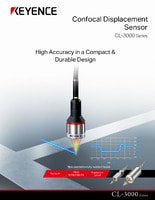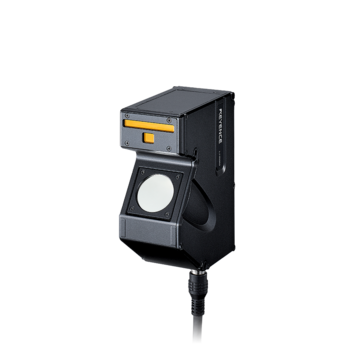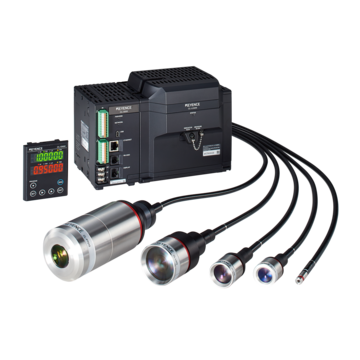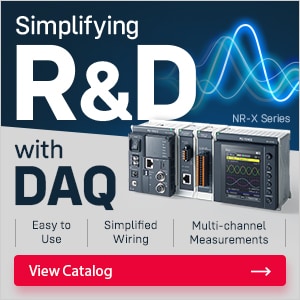Measurement Sensors
Dimension Measurement
Displacement Measurement
Measurement Sensors for the Battery
From the first cells to the final pack, battery manufacturing inspection relies on sensors to ensure that every component of the battery complies with industry standards. These battery inspection sensors monitor for leaks and product defects, which helps reduce errors and create a safer environment.
Get detailed information on our products by downloading our catalog.
View Catalog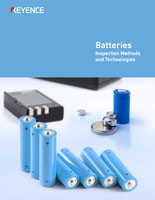

Why Sensors Are Essential in Battery Manufacturing
Sensors not only help maintain safety but also product consistency. In lithium-ion battery production, the charge and discharge cycles of these batteries produce heat and pressure fluctuations that can lead to delamination or thermal runaway if left unchecked.
Electric vehicle engineers no longer have to perform manual quality checks as a sensor can perform the checks for them. With production being more streamlined, manufacturers are now able to focus on efficiency.
Key Applications of Sensors in Battery Inspection
There are a variety of sensors used in the battery pack manufacturing process. Pressure sensors are used to detect swelling on the battery housing that could otherwise result in a structural failure. During formation, these sensors also help reduce variability between cells. Thermal imaging sensors are used to monitor the battery’s initial charging process and detect potential hot spots that could lead to overheating.
Laser displacement sensors and 3d profile sensors provide precise measurements of weld alignment and coating thickness. These sensors can detect irregularities early and prevent costly defects. Additionally, ultrasonic sensors are used to inspect electrode and separator films for tears and double feeds.
Ensuring Battery Pack Integrity
Battery packs must be assembled correctly and tested to avoid safety hazards and performance issues. Sensors used in battery manufacturing are used to monitor the battery throughout production to verify that it won’t short-circuit or overheat. To help maintain integrity, vision systems and laser displacement sensors help verify that everything is properly aligned and stable. These battery inspection sensors also enable and track unique identification codes that help monitor quality control. It also helps manufacturers act quickly in the event of a malfunction.
We’re here to provide you with more details.
Reach out today!

Monitoring the Manufacturing Process
During the battery manufacturing inspection process, a sensor’s main job is to keep production on track. The sensors monitor everything from the coating thickness of electrode materials to the final appearance of the battery. Optical sensors guide electrode and separator films to prevent misalignments that could cause defects. Sensors also provide consistent and precise material positioning.
Benefits of Using Advanced Sensors in Battery Manufacturing
Real-time monitoring with advanced sensor systems keeps quality consistent while streamlining processes and minimizing human error. These sensors also enhance safety by identifying overheating or structural issues before they can escalate. Advanced sensors mean fewer mistakes and a higher quality product.
Common Types of Battery Inspection Sensors and Their Functions
Pressure Sensors
Monitor stack pressure during assembly to prevent defects such as delamination and uneven wear.
Thermal Imaging Sensors
Detects overheating and hotspots, minimizing the risk of thermal runaway.
Laser Displacement Sensors
Measure coating thickness, electrode alignment, and weld quality with high precision.
Vision Systems
Identify surface defects, verify alignment, and track traceability codes on battery cells and modules.
Ultrasonic Sensors
Inspect electrode films for tears, double feeds, or other structural issues, ensuring component integrity.
By integrating the right sensors into their production lines, manufacturers can overhaul their battery manufacturing inspection process and deliver reliable, high-performance batteries to meet the needs of today’s consumers.
KEYENCE offers a range of cutting-edge sensors tailored to your needs. From laser displacement sensors to any measurement sensors your job requires, our tools help you overcome production challenges and achieve consistent results. Contact KEYENCE today to learn how our advanced sensor solutions can optimize your battery manufacturing inspection process.
Contact us to learn more about how our advanced technology can help take your business to the next level.
Contact Us
Related Products
Applications
Dimension Measurement
- Thickness and Width Measurement
- Step Height Measurement
- Inner and Outer Diameter Measurement
- Measuring Angles
- Meandering/Edge Measurement
Displacement Measurement
- Positioning and Stroke Length Measurement
- Vibration and Runout Measurement
- Deflection Measurement
- Measuring Eccentricity

